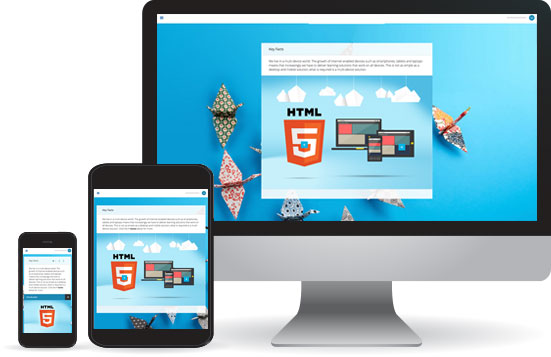In the realm of e-learning authoring tools, Adapt emerges as a standout platform, offering distinctive advantages that set it apart from proprietary applications like Articulate Storyline and Adobe Captivate. This review focuses on two key features of Adapt: its unparalleled responsive design capabilities and the open-source advantage it brings to the table.
Responsive Design Mastery
Adapt's hallmark lies in its exceptional responsiveness, allowing content to adapt seamlessly across devices of varying screen sizes and resolutions. Unlike some proprietary tools that may require separate design iterations for desktops, tablets, and mobile devices, Adapt employs a fluid grid system combined with flexible layouts. This approach ensures that content adjusts dynamically, retaining its integrity and functionality regardless of the device being used.
Under the hood, Adapt utilizes HTML5 and CSS3, empowering creators to develop courses that automatically adjust elements like text, images, and interactive components to suit different screen dimensions. Its component-based structure allows for the creation of adaptable learning modules that intelligently rearrange themselves, offering an optimal viewing experience without compromising content quality or user interaction.
Adapt's focus on true responsiveness benefits both learners and creators. Learners can access courses seamlessly across devices, ensuring a consistent and engaging learning experience regardless of the device they choose. Creators, on the other hand, can build once and deploy anywhere, saving time and effort while ensuring a wider reach for their courses.
Open-Source Flexibility
Adapt's open-source nature presents a wealth of opportunities for customization, flexibility, and innovation. Being open-source means that the tool's source code is openly accessible, allowing users to delve into the codebase, modify functionalities, and create bespoke solutions tailored to specific project requirements.
The open-source ecosystem of Adapt fosters a community-driven approach to development. Users can contribute enhancements, plugins, templates, and improvements back to the community. This collaborative environment not only encourages innovation but also ensures that the tool stays relevant and up-to-date with the evolving needs of e-learning.
Moreover, the open-source nature of Adapt promotes transparency and eliminates vendor lock-in. Organizations and developers are not tied down to a specific vendor's roadmap or licensing constraints, granting them the freedom to innovate, customize, and scale the tool according to their unique needs and preferences.
This flexibility and freedom to tailor the tool to specific requirements make Adapt a versatile and adaptable platform for e-learning creators. It empowers them to create highly customized and effective learning experiences, fostering engagement and knowledge retention among learners while offering a cost-effective and sustainable solution for organizations seeking scalable e-learning solutions.
In comparison to Articulate Storyline and Adobe Captivate, Adapt shines in its responsive design capabilities, open-source flexibility, and cost-effectiveness. While proprietary tools have their strengths, such as extensive features and robust multimedia capabilities, Adapt's focus on responsiveness, adaptability, and community-driven development make it a strong contender in the e-learning authoring realm.

